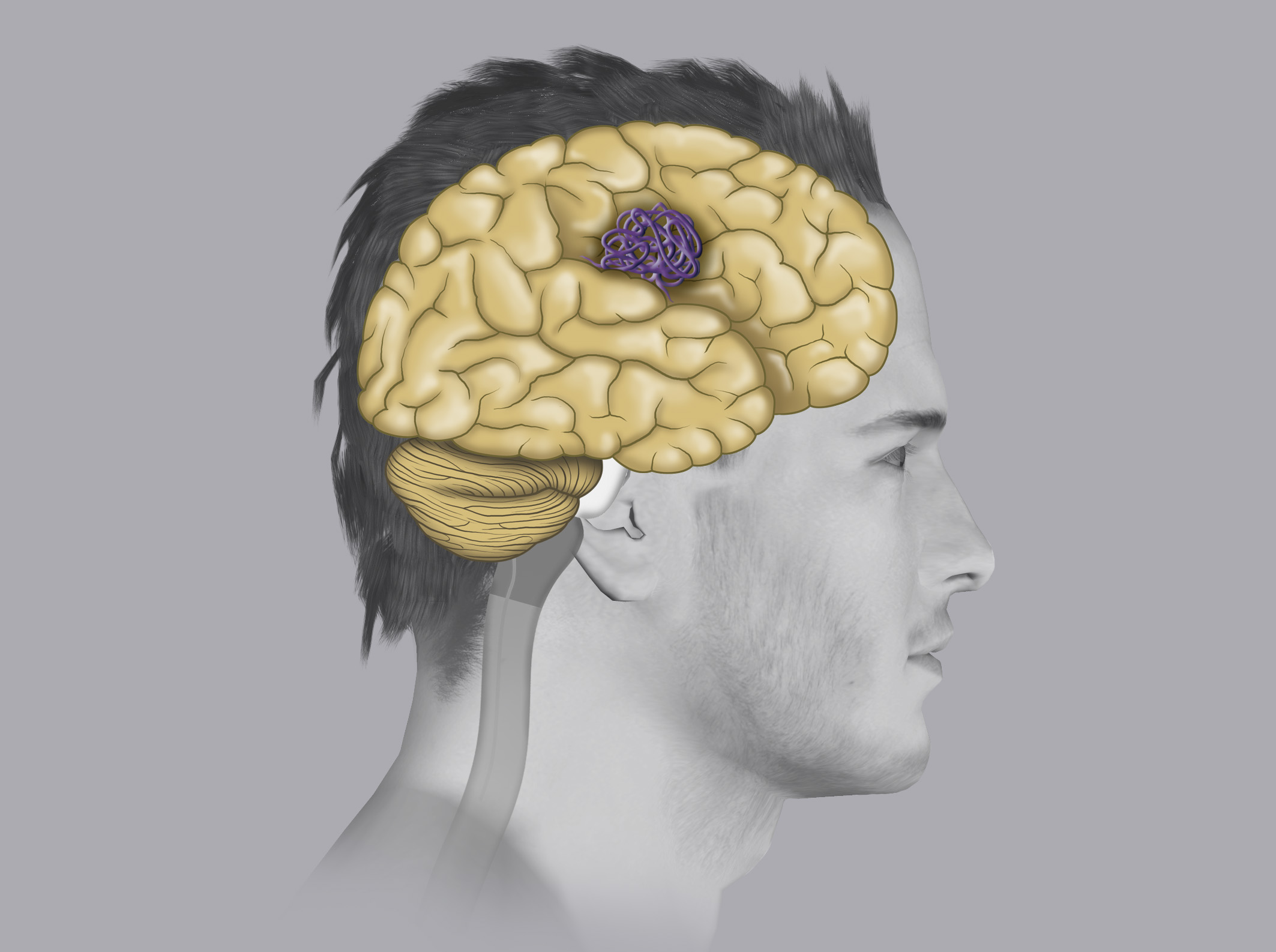
Treated conditions
Home » Areas of expertise » Cavernous Angiomas
Treated conditions
Cavernous Angiomas
Cavernous angiomas (also called cavernomas) are vascular malformations formed by an agglomerate of low-flow vessels, very similar in shape to blackberries.
Their prevalence in the population is low (about 0.5%).
There is no clear etiology. It is likely that they are congenital malformations and are often associated with multiple angiomatosis.
They can be located in the brain or in the spinal cord.
Symptoms
Like in the case of other vascular malformations, the great majority of cases is entirely asymptomatic and the discovery of the malformation is often incidental.
Very often cavernous angiomas experience asymptomatic micro-bleedings, which can be detected exclusively by means of brain MRI.
However, cavernomas can also reveal themselves clinically with seizures or brain hemorrhages caused by their rupture.
Diagnosis
The diagnostic tests are brain CT and MRI, the latter being more accurate, which make it possible to obtain the typical pop-corn shape image. Cerebral angiography proves to be negative in these cases. In case of multiple or familiar cavernomas it is also advisable to analyse the spinal cord by performing a MRI on the entire spine. Considering the epileptogenic nature of this malformation, an electroencephalography (EEG) is likewise advisable.
Should the lesion occupy an eloquent brain area, a functional brain MRI should furthermore be performed.
Treatment
As opposed to the arterio-venous malformations, in this case radiotherapy and the endovascular treatment are ineffective.
The treatment can therefore be only surgical and should be considered for symptomatic cavernomas in case of refractory seizures under pharmacological therapy, for those that evolve upon neuroradiological follow-up or, unquestionably, if they occurred with a hemorrhage.
Surgery consists in the resection of the lesion, under close neurophysiological intraoperative monitoring, and with the use of neuronavigation, in order to limit the surgical manoeuvres to the area of the lesion and respect the healthy brain tissue, especially if the lesion occupies an eloquent brain area.
The risks of the procedure are related to the site of the cavernous angioma.

